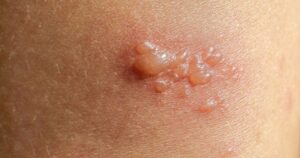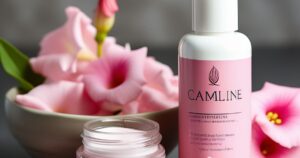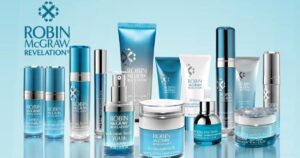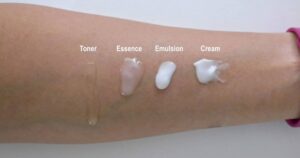In the realm of self-care, our skin acts as a steadfast companion, a reflection of our inner and outer worlds. Like a symphony, our skin requires a harmonious routine to reveal its true radiance. With a blend of expertise and nurturing, this article will guide you through the steps of creating a personalized skin care routine. Drawing from the wisdom of dermatologists and research-backed practices, you will embark on a transformative journey towards healthier, more vibrant skin.
Key Takeaways
- Understanding your skin type is crucial for creating an effective skincare routine.
- Gentle cleansing and toning are essential steps in a skincare routine to remove impurities and balance the skin’s pH levels.
- Regular exfoliation helps renew the skin by removing dead cells and improving texture and tone.
- Choosing the right moisturizer for your skin type and specific needs is important for nourishing and hydrating the skin.
Determine Your Skin Type
Determining your skin type is an essential step in developing an effective and personalized skin care routine. Understanding your skin type allows you to choose appropriate products that will address your specific needs. There are four main skin types: oily, dry, combination, and normal. To determine your skin type, start by observing your skin’s characteristics. Oily skin tends to have a shiny appearance and is prone to breakouts, while dry skin may feel tight and flaky. Combination skin has both oily and dry areas, and normal skin is well-balanced with few issues. Once you have identified your skin type, you can select products tailored to address its unique requirements. This knowledge will help you achieve optimal results in maintaining and improving your skin’s health. Now that you know your skin type, let’s move on to the next step: cleansing your skin effectively.
Cleanse Your Skin Effectively
To cleanse your skin effectively, use a gentle cleanser and a coordinating toner. Proper skincare techniques are essential for maintaining healthy and radiant skin. Cleansing is the first step in your skincare routine and sets the foundation for the rest of your regimen. It helps remove dirt, oil, and impurities, allowing your skin to breathe and absorb subsequent products more effectively. When choosing a cleanser, opt for one that suits your skin type and concerns. For example, if you have dry skin, go for a hydrating cleanser, while oily skin may benefit from a foaming cleanser. Furthermore, using a toner after cleansing helps balance your skin’s pH levels, tighten pores, and prepare your skin for moisturizers and serums. Below is a table showcasing some of the best products for cleansing:
| Skin Type | Gentle Cleanser | Coordinating Toner |
|---|---|---|
| Dry | Hydrating Cleansing Milk | Hydrating Toner |
| Oily | Foaming Gel Cleanser | Mattifying Toner |
| Combination | Cream Cleanser | Balancing Toner |
| Sensitive | Fragrance-Free Cleanser | ““““““““““““““`Calming Toner |
| Acne-Prone | Salicylic Acid Cleanser | Clarifying Toner |
Exfoliate to Remove Dead Skin Cells
Exfoliating your skin is an essential step in any skincare routine as it helps to remove dead skin cells, revealing a smoother and brighter complexion. There are various types of exfoliants available, including physical scrubs and chemical exfoliants, each offering unique benefits for different skin types. The frequency of exfoliation depends on your skin’s sensitivity and needs, but it is generally recommended to exfoliate 1-2 times a week for optimal results.
Benefits of Exfoliation
One of the most significant benefits of exfoliation is that it helps to remove dead skin cells and promote a healthier complexion. Regular exfoliation can provide numerous advantages for your skin. Here are some benefits of incorporating exfoliation into your skincare routine:
- Improved skin texture: Exfoliating helps to smooth out rough patches and uneven skin texture, leaving your skin feeling soft and smooth.
- Enhanced skin tone: By removing dead skin cells, exfoliation can help to reveal a brighter and more even skin tone, reducing the appearance of dullness and discoloration.
- Reduced clogged pores: Exfoliation can unclog your pores and prevent the buildup of dirt, oil, and dead skin cells that can lead to acne breakouts.
- Better absorption of skincare products: By removing the barrier of dead skin cells, exfoliation allows your skincare products to penetrate deeper into the skin, maximizing their effectiveness.
Incorporating exfoliation techniques into your skincare routine can lead to healthier and more radiant-looking skin.
Types of Exfoliants
Two common types of exfoliants are physical exfoliants, which use granules or particles to slough off dead skin cells, and chemical exfoliants, which use acids or enzymes to dissolve or loosen the bonds between dead skin cells. Physical exfoliants are often made from natural ingredients, such as sugar, salt, or ground nuts, and work by manually scrubbing away the dead skin cells. On the other hand, chemical exfoliants contain ingredients like alpha hydroxy acids (AHAs) or beta hydroxy acids (BHAs) that gently dissolve the dead skin cells, revealing a fresh and renewed complexion. To help you understand the key differences between these two types of exfoliants, refer to the table below:
| Physical Exfoliants | Chemical Exfoliants |
|---|---|
| Utilizes granules or particles | Uses acids or enzymes |
| Manual scrubbing action | Dissolves or loosens bonds between dead skin cells |
| Natural ingredients like sugar or salt | Contains alpha or beta hydroxy acids |
| Suitable for most skin types | Suitable for various skin concerns |
Now that you are familiar with the types of exfoliants, let’s move on to discussing the frequency of exfoliation.
Frequency of Exfoliation
To maintain healthy and radiant skin, it is essential to incorporate exfoliation into your skincare routine at least once a week. Exfoliation helps to remove dead skin cells, unclog pores, and improve the overall texture and appearance of your skin. However, it is important to find the right balance when it comes to exfoliation frequency. Here are some tips to help you determine how often you should exfoliate:
- Pay attention to your skin type: Different skin types have different exfoliation needs. If you have sensitive skin, you may need to exfoliate less frequently, while those with oily skin may benefit from more regular exfoliation.
- Consider the exfoliation technique: There are various exfoliation techniques available, such as physical exfoliation with scrubs or chemical exfoliation with acids. The type of exfoliation you choose can affect how often you should exfoliate.
- Start slow and gradually increase frequency: If you are new to exfoliation, start with once a week and see how your skin reacts. You can then adjust the frequency based on your skin’s needs.
- Listen to your skin: Pay attention to how your skin feels after exfoliation. If it feels dry, irritated, or sensitive, you may be exfoliating too often. On the other hand, if your skin feels smooth and refreshed, you may be exfoliating just the right amount.
Nourish and Hydrate With the Right Moisturizer
When it comes to nourishing and hydrating your skin, choosing the right moisturizer is essential for maintaining a healthy and vibrant complexion. Moisturizer selection plays a crucial role in providing hydration and nourishment to your skin. To find the perfect moisturizer for your skin type, consider factors such as your skin’s specific needs, ingredients, and texture preferences. For dry skin, opt for a moisturizer with ingredients like hyaluronic acid and ceramides, which help to retain moisture and restore the skin’s natural barrier. Those with oily or acne-prone skin can benefit from lightweight, oil-free moisturizers that provide hydration without clogging pores. Additionally, incorporating hydration tips such as drinking enough water, using a humidifier, and avoiding hot showers can further enhance the effectiveness of your moisturizer. Transitioning into the subsequent section, protecting your skin from sun damage is another crucial aspect of a well-rounded skincare routine.
Protect Your Skin From Sun Damage
Protecting your skin from sun damage is crucial for maintaining its health and preventing premature aging. One essential step in this process is using sunscreen daily. Sunscreens help shield your skin from harmful UV rays, which can cause damage such as sunburns, wrinkles, and even skin cancer. By incorporating sunscreen into your daily skincare routine, you can provide your skin with the protection it needs to stay healthy and youthful.
Sunscreen: Essential for Protection
Applying sunscreen is an essential step in protecting your skin from sun damage. Sunscreen acts as a barrier, shielding your skin from the harmful effects of ultraviolet (UV) rays. To ensure effective sunscreen application, follow these tips:
- Choose a broad-spectrum sunscreen that protects against both UVA and UVB rays.
- Look for a sunscreen with a sun protection factor (SPF) of 30 or higher.
- Apply sunscreen generously and evenly to all exposed areas of your skin.
- Reapply sunscreen every two hours, or more frequently if you are swimming or sweating.
When selecting sunscreen, it is important to check the ingredients. Look for sunscreens that contain zinc oxide or titanium dioxide, as these physical blockers provide optimal protection against the sun’s rays. Now, let’s explore the harmful effects of UV rays on the skin.
UV Rays: Harmful Skin Effects
Exposure to ultraviolet (UV) rays can have detrimental effects on the skin, causing sunburn, premature aging, and an increased risk of skin cancer. UV rays are emitted by the sun and can penetrate the skin, damaging its cells and DNA. Sunburn, the most immediate and visible effect of UV exposure, occurs when the skin becomes red, swollen, and painful. However, the harmful effects of UV rays go beyond sunburn. Prolonged exposure to UV radiation can lead to premature aging, characterized by wrinkles, fine lines, and a leathery texture. Moreover, repeated exposure to UV rays can increase the risk of skin cancer, including both melanoma and non-melanoma types. To protect your skin from these harmful effects, it is crucial to practice sun protection measures such as wearing sunscreen, seeking shade, and wearing protective clothing.
Incorporate Targeted Treatments for Specific Concerns
What are the key considerations when incorporating targeted treatments for specific skin concerns?
When it comes to addressing specific skin concerns, incorporating targeted treatments into your skincare routine is essential. These treatments are designed to address specific issues such as acne, hyperpigmentation, fine lines, and dryness. Here are some key considerations to keep in mind:
- Identify your specific skin concern: Before incorporating targeted treatments, it’s important to identify the specific concern you want to address. This will help you choose the most effective treatment for your skin.
- Research evidence-based solutions: Look for treatments that have been scientifically proven to be effective in addressing your specific skin concern. This will ensure that you are investing in products that will deliver desired results.
- Consult with a dermatologist: If you have severe or persistent skin concerns, it is always advisable to consult with a dermatologist who can provide personalized recommendations and guidance.
- Introduce treatments gradually: When incorporating targeted treatments, it’s important to introduce them gradually into your routine. Start with a small amount and monitor how your skin reacts to the treatment. This will help prevent any potential irritation or adverse effects.
Frequently Asked Questions
Can I Use the Same Cleanser for Both Morning and Evening Routines?
Yes, using the same cleanser for both morning and evening routines can be suitable for combination skin. However, it is important to consider the importance of double cleansing for thorough removal of impurities and maintaining skin health.
How Often Should I Exfoliate My Skin?
Exfoliating regularly is essential for maintaining healthy skin. However, the frequency of exfoliation depends on your skin type and sensitivity. It is generally recommended to exfoliate 1-3 times per week to remove dead skin cells and promote cell turnover.
What Ingredients Should I Look for in a Moisturizer for Dry Skin?
To find the best moisturizer for dry skin, look for ingredients like hyaluronic acid, ceramides, and glycerin. These ingredients help hydrate and repair the skin barrier. Maintaining a healthy skin barrier is crucial for preventing moisture loss and maintaining a smooth complexion.
Should I Apply Sunscreen Even When It’s Cloudy Outside?
Applying sunscreen on rainy days and during winter is crucial, as harmful UV rays can penetrate clouds and reflective surfaces. Protecting your skin from sun damage is essential for maintaining its health and preventing premature aging.
Are There Any Specific Treatments for Reducing Dark Spots or Hyperpigmentation?
Dark spots and hyperpigmentation can be treated through various methods, including laser therapy, chemical peels, and topical creams containing ingredients like hydroquinone or retinoids. Additionally, natural remedies such as lemon juice or aloe vera may help lighten dark spots.
Conclusion
In conclusion, establishing a proper skin care routine is essential for maintaining healthy and radiant skin. By determining your skin type, cleansing effectively, exfoliating regularly, nourishing with the right moisturizer, and protecting from sun damage, you can achieve optimal skin health. Additionally, incorporating targeted treatments can address specific concerns and enhance overall results. Remember, taking care of your skin is not only about appearance, but also about promoting long-term skin health. So, why wait? Start your skin care journey today and reap the benefits of a glowing complexion.










